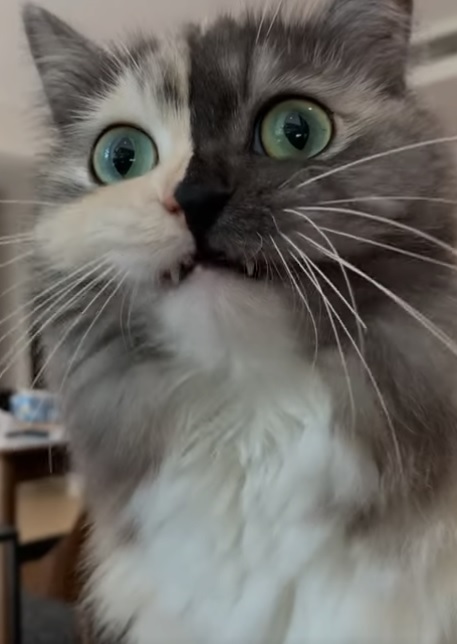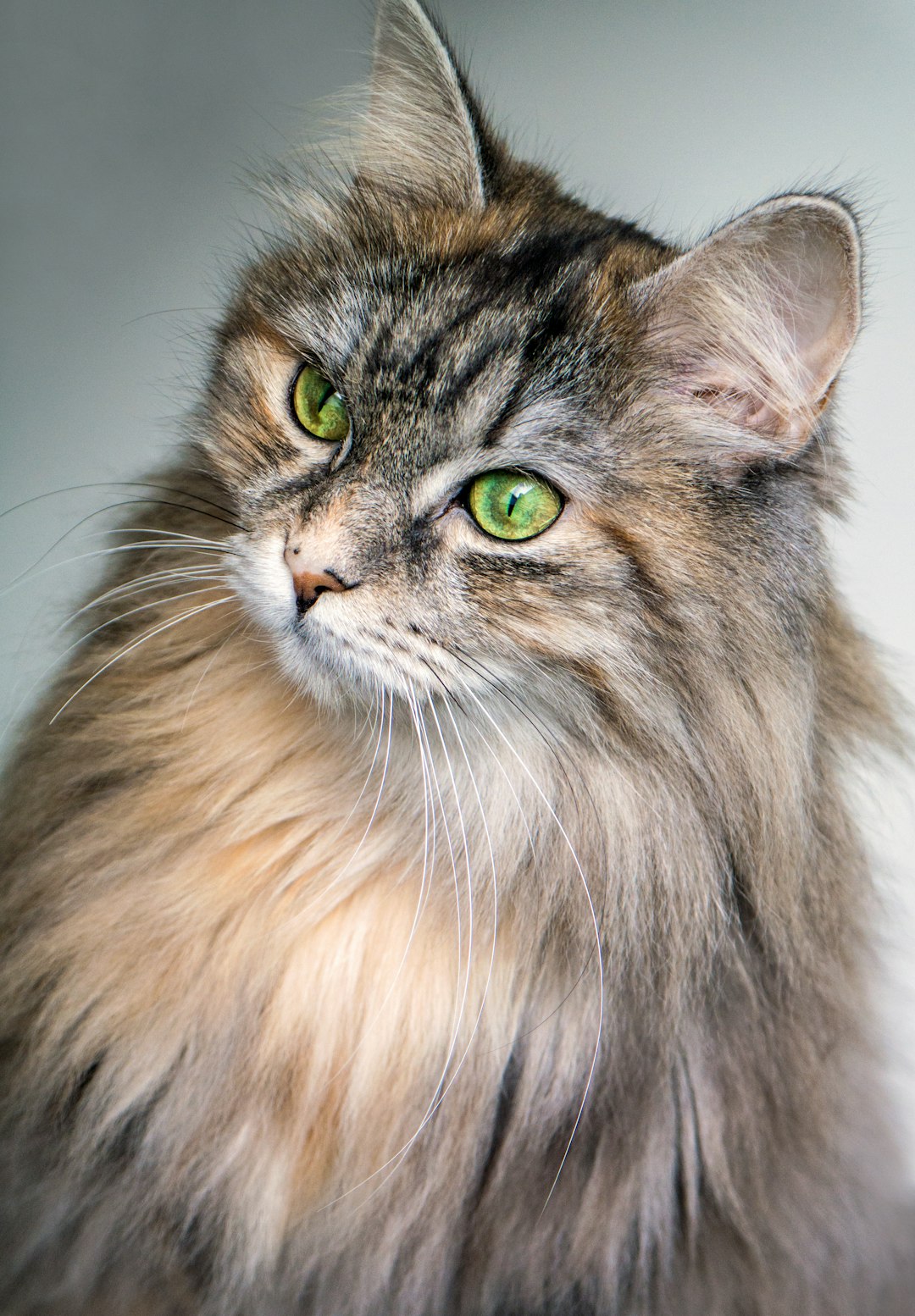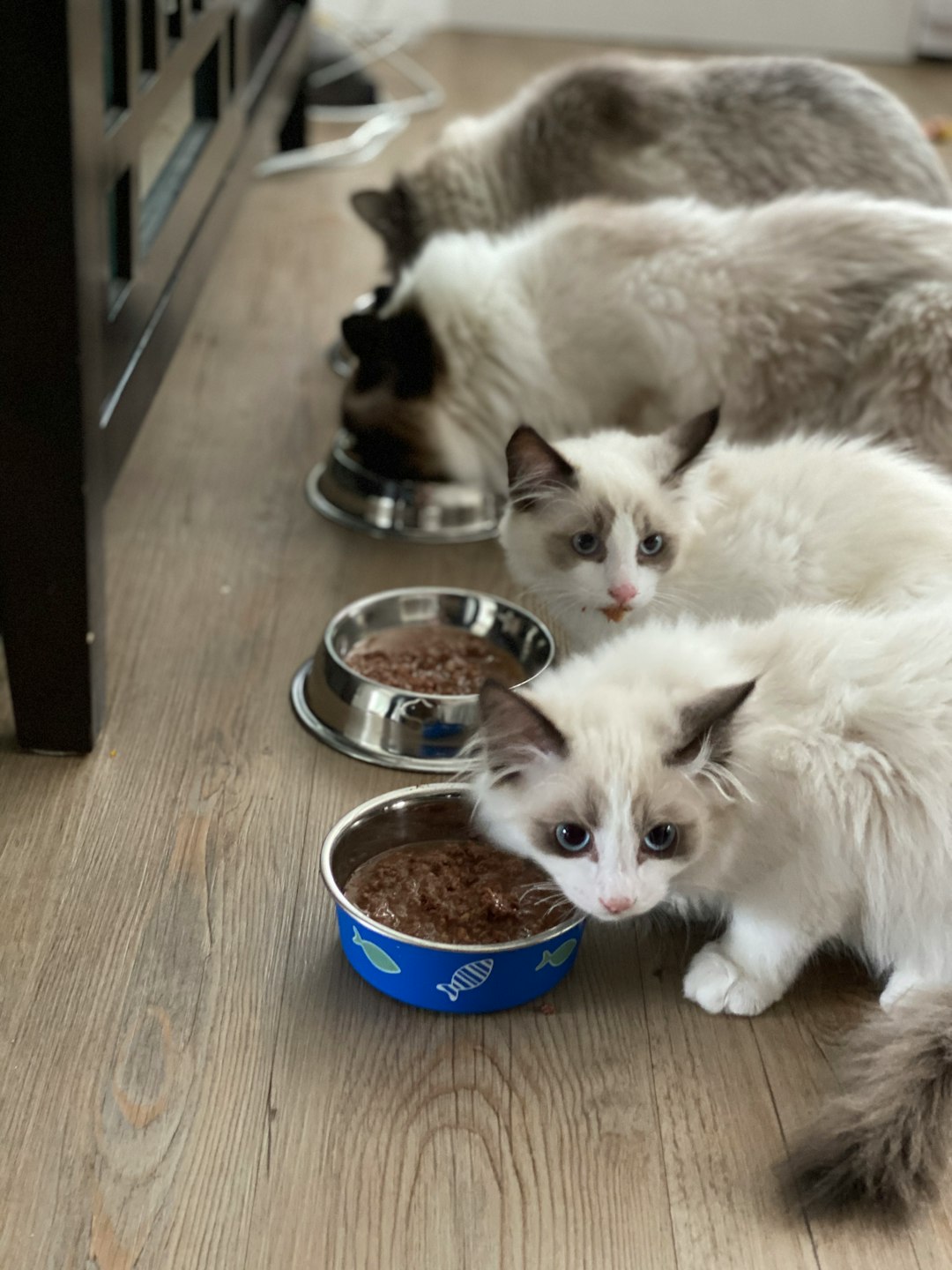Chimera Cats are a fascinating and rare breed that captures the imagination of cat lovers worldwide. Known for their unique genetic makeup, these cats exhibit striking physical characteristics and diverse behavioral traits. Beyond their allure, understanding their specific care needs is essential for ensuring a happy and healthy life. In this post, we will delve into what makes Chimera Cats so special, exploring their genetics, health considerations, and grooming requirements. By doing so, we hope to equip you with the knowledge needed to provide the best care for your extraordinary feline companion.
What is a Chimera Cat?
Chimera cats are a fascinating genetic marvel that captivates pet lovers and scientists alike. These unique felines exhibit two distinct sets of DNA, which often results in striking differences in appearance.
Key features of Chimera cats include:
- Dual Coloration: Most Chimera cats present a unique fur pattern with two colors, sometimes creating a dramatic contrast.
- Distinct Facial Features: You may notice that one side of a Chimera cat’s face differs from the other, often showcasing varying eye colors or fur patterns.
- Genetic Composition: Chimera cats arise when two embryos fuse into one during early development. This results in the presence of cells with two different genetic makeup.
Fun Fact: While these cats may appear unusual, they are completely healthy. Their dual DNA often leads to vibrant personalities and an array of physical traits that set them apart from ordinary cats.
In summary, Chimera cats are not just visually stunning; they are complex beings with unique genetic stories waiting to be explored.
The Genetics Behind Chimera Cats
Chimera cats possess a fascinating genetic makeup that sets them apart from typical felines. Essentially, these unique animals arise when two distinct embryos fuse together early in development, resulting in one individual with two separate sets of DNA. Here’s how it works:
Genetic Fusion: Each embryo contributes its own genotype, leading to an intricate patchwork of genetic material. This fusion occurs at the cellular level, creating a mosaic of traits.
Coloration Variability: The varying DNA explains the striking color patterns often seen in Chimera Cats. Each area of their coat can express different colors and patterns, typically reflecting the genetic contribution from each embryo.
Unique Physical Traits: Traits such as fur texture, eye color, and even certain health aspects can differ based on which DNA variant predominates in a particular area of the cat’s body.
Understanding the genetics behind Chimera Cats not only highlights their rarity but also enhances appreciation for their complex nature. By delving into their genetic origins, cat lovers can gain insight into the unique characteristics that make these feline wonders so captivating.
Physical Characteristics of Chimera Cats
Chimera Cats possess a mesmerizing blend of physical traits, making them some of the most visually unique felines. Unlike ordinary cats, Chimera Cats exhibit distinct coloration and patterns that reflect their remarkable genetic makeup. Here are key characteristics that set them apart:
Two Distinct Color Patterns:
- Often, you’ll find one half of the cat one color (e.g., orange) and the other half a different shade (e.g., black or white).
Mixed Eye Colors:
- These cats can also have asymmetrical eye colors, which adds to their enchanting appearance. One eye may be green while the other is blue.
Variation in Fur Texture:
- The fur on each side can differ in texture and length, creating a patchwork of softness and sheen.
Facial Features:
- Chimera Cats often show a subtle bisexuality in their features, reflecting a combination of traits.
Each Chimera Cat tells its own unique story through its stunning appearance, inviting admiration and interest. In summary, their physical characteristics make these cats not just pets but also living artwork.
Behavioral Traits and Temperament
Chimera Cats possess a range of intriguing behavioral traits and temperament that make them unique companions. Here are some key characteristics:
Affectionate Nature: Generally, Chimera Cats are known for their loving disposition. They often form strong bonds with their owners, enjoying cuddle time and companionship.
Playful and Curious: These cats exhibit a playful spirit. They enjoy interactive toys and exploring their surroundings, which keeps them stimulated and engaged.
Intelligent and Adaptable: Chimera Cats exhibit high intelligence levels. As a result, they can learn commands and tricks quickly, adapting to their environment with ease.
Vocal Communication: Many Chimera Cats are vocal and use various sounds to communicate. They may express hunger, affection, or discontent, requiring attentive care from their owners.
Comparison Chart: Temperament Traits of Chimera Cats
| Trait | Description |
|---|---|
| Affectionate | Strong bond with owners |
| Playfulness | Enjoys games and exploration |
| Intelligence | Learns commands and adapts quickly |
| Vocalization | Communicates through various sounds |
Understanding these traits helps in providing the appropriate environment and care for your Chimera Cats, ensuring a happy and fulfilling life together.
Health Considerations for Chimera Cats
Chimera cats, fascinating in their genetics and appearance, require specific health considerations to ensure they thrive. Understanding these needs will help in maintaining their well-being.
Here are some essential health points to keep in mind:
Regular Vet Check-ups: Schedule annual veterinary visits to monitor overall health and spot potential issues early.
Genetic Screening: Since Chimera cats can inherit diverse genetic traits, consider genetic testing for common feline diseases.
Dental Health: Regular dental care is crucial. Brush their teeth and provide dental treats to prevent dental diseases.
Weight Management: Monitor their weight closely. Obesity can lead to various health problems, such as diabetes and joint issues.
Vaccinations: Keep up with vaccinations to protect against common feline illnesses.
Diet and Nutrition: A balanced diet ensures their unique body requires the right nutrients for optimal health.
By staying proactive about these considerations, you can help your Chimera cat lead a healthy and happy life. Remember, each cat is unique, so tailor your approach to fit their individual needs!
Nutrition Needs for Chimera Cats
Proper nutrition is essential for the health and well-being of Chimera Cats, ensuring they maintain their unique traits and energy levels. These fascinating felines require a balanced diet to support their dual genetic makeup. Here are key considerations to keep in mind:
- High-Quality Protein: Prioritize protein sources like chicken, turkey, or fish to support muscle health.
- Fat Content: Include healthy fats, such as omega-3 and omega-6 fatty acids, for a shiny coat and overall vitality.
- Vitamins and Minerals: Ensure a mix of essential vitamins (A, B, D, E) and minerals (calcium, potassium) to promote optimal health.
Sample Feeding Plan for Chimera Cats:
| Meal Type | Composition |
|---|---|
| Breakfast | High-protein dry kibble |
| Lunch | Canned wet food with added nutrients |
| Dinner | Fresh cooked meat with vegetables |
In addition to meal composition, consider the following tips:
- Hydration: Always provide fresh water. Chimera Cats can be prone to urinary issues, so hydration is crucial.
- Portion Control: Monitor portions to prevent obesity, as some Chimera Cats may have a tendency to overeat.
By meeting the specific nutrition needs of Chimera Cats, you can help ensure they thrive and enjoy a healthy, happy life.
Grooming Recommendations
Caring for Chimera Cats requires a tailored grooming routine to maintain their unique appearance and health. Here are some key recommendations:
Brushing:
- Use a soft-bristle brush, ideally once a week, to reduce shedding and prevent matting.
- For long-haired Chimera Cats, daily brushing helps keep their fur tangle-free.
Bathing:
- Generally, avoid frequent baths; once every few months is sufficient.
- Use a gentle, cat-friendly shampoo if necessary, especially if they get dirty.
Nail Trimming:
- Trim your Chimera Cat’s nails every 2-4 weeks to prevent overgrowth.
- Consider using a nail clipper designed specifically for cats.
Ear Cleaning:
- Regularly check and clean their ears using a vet-recommended solution to prevent infections.
Dental Care:
- Incorporate dental hygiene by brushing their teeth with cat toothpaste at least 2-3 times a week.
By following these grooming recommendations, you will help keep your Chimera Cat looking great and feeling healthy. Remember, regular grooming can also strengthen the bond between you and your pet!
Living Environment for Chimera Cats
Creating an optimal living environment for Chimera Cats is essential for their well-being. These unique felines thrive in settings that cater to their specific needs. Here are some key considerations for their environment:
- Space: Ensure ample room for your Chimera Cat to explore and play. A safe, spacious area allows them to exhibit their natural hunting instincts.
- Vertical Space: Incorporate cat trees or shelves for climbing. Chimera Cats enjoy perching high and observing their surroundings.
- Safe Zones: Provide cozy hiding spots, like cat caves or boxes. These areas offer comfort and security, especially during stressful situations.
- Environmental Enrichment: Use toys, scratching posts, and interactive games to stimulate their mentally and physically. Rotating toys can keep them engaged.
Comparisons of Living Environments
| Element | Recommended Setting | Benefits |
|---|---|---|
| Space | Indoor/outdoor access | Freedom to explore and exercise |
| Vertical Space | Cat trees/shelves | Encourages climbing and play |
| Safe Zones | Cozy hideaways | Provides security |
| Environmental Enrichment | Interactive toys | Boosts mental stimulation |
By attentively designing your Chimera Cat’s living space, you will support their physical health and enhance their emotional well-being.
Common Myths About Chimera Cats
Chimera Cats often spark curiosity and admiration, but many myths surround these unique felines. It’s essential to debunk these misconceptions to understand Chimera Cats better.
Myth 1: Chimera Cats Are Hybrids
- Truth: Chimera Cats are not hybrids. They result from the fusion of two embryos, leading to one cat with two distinct DNA profiles.
Myth 2: They Have Supernatural Abilities
- Truth: Despite their striking appearance, Chimera Cats possess no extraordinary powers. Their unique looks come from genetic variation, not mystical forces.
Myth 3: All Chimera Cats Have Two Different Colors
- Truth: While many Chimera Cats display contrasting colors, some may showcase more subtle variations. The physical appearance varies significantly among individuals.
Myth 4: Chimera Cats Are Aggressive
- Truth: Behavior largely depends on the individual cat. Chimera Cats do not display aggression merely due to their unique genetics; their temperament relies on socialization and training.
In conclusion, separating fact from fiction creates a clearer understanding of Chimera Cats and ensures proper care and appreciation for these extraordinary pets.
Conclusion: Caring for a Chimera Cat
Caring for Chimera Cats requires a blend of understanding their unique traits and meeting their specific needs. These fascinating felines, with their distinctive appearance and temperament, thrive in a loving environment. Here are key points to consider:
Regular Vet Visits: Keep up with routine veterinary check-ups to monitor the health of your Chimera Cat. Early detection of any issues can lead to better outcomes.
Balanced Diet: Provide high-quality food tailored to their age, weight, and health. Chimera Cats may have specific dietary requirements, so consult your vet for recommendations.
Social Interaction: These cats enjoy companionship and thrive on social engagement. Spend quality time playing, grooming, and bonding.
Grooming Needs: Depending on their coat type, Chimera Cats may require regular brushing to avoid matting and reduce shedding.
Safe Environment: Ensure a safe, comfortable living space. Secure windows and balconies to prevent accidents.
In conclusion, by meeting the unique needs of Chimera Cats, you can cultivate a happy, healthy, and fulfilling relationship with these extraordinary animals.



